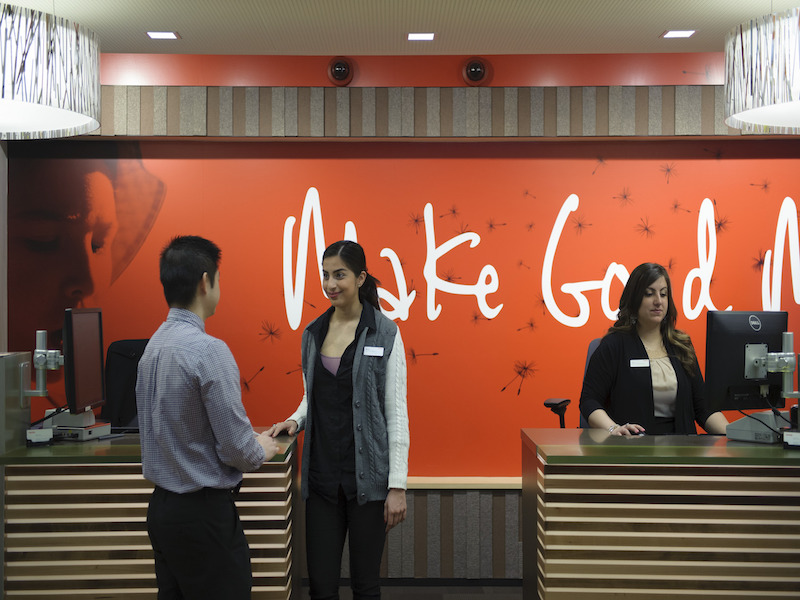
Vancouver City Savings Credit Union has put its frontline staff on a rotation system and introduced a virtual health-care app to support them during the coronavirus pandemic.
When the pandemic hit British Columbia, Vancity began to see a steep climb in unexplained absences, reaching as high as 140 a day. “Like many people across the country when this first broke, [our financial services representatives] were really unsure and quite scared. They didn’t have the confidence coming into work,” says Tamara Vrooman, Vancity’s chief executive officer.
Read: BMO highlights health supports for staff during coronavirus
“We could tell early on that if we didn’t pay attention to not only the health guidelines and how to comply with them — and, of course, we would do that — but also the less tangible, but really important, confidence of our staff that they were working in a safe and secure environment, that their needs were paramount, those numbers were likely to rise.”
In response, the credit union moved its frontline staff onto three-week rotations as of mid-March. Employees spend one week in a Vancity branch, one week working from home or in an office location on administrative work or supporting the credit union’s call centre and one week off for rest.
“We recognize all of this is really stressful and people were juggling a whole pile of things in their home lives,” says Vrooman. “We also wanted to make sure people had enough rest and respite to be able to recharge and come back to work.”
Vancity also installed plexiglass between tellers and customers, as well as in account managers’ offices in case they needed to meet with clients to get signatures or exchange documents.
Read: Remote working, distributed workforces could be part of new normal post-coronavirus
Since the new protocols were put in place, unexplained absences have dropped from their peak to just one or two per day.
As well, all employees now have access to Telus Health’s virtual health-care service, which they can access on their phone or home computer. More than 400 Vancity employees have accessed the service so far. “Daily things of kids falling and bumping their head or a funny rash, or general health-care concerns and even mental-health anxieties are higher at this time given the unique situation,” says Vrooman.
Vancity also gave $200 to its staff members that were newly working from home for any necessary purchases to make their workspaces more ergonomic and partnered with local businesses to get discounts for employees.
To support employees’ mental health, the credit union has shared podcasts, seminars and other online posts on how to lead and function during this time. It also waived the six-month waiting period for new employees to have access to its benefits package.
